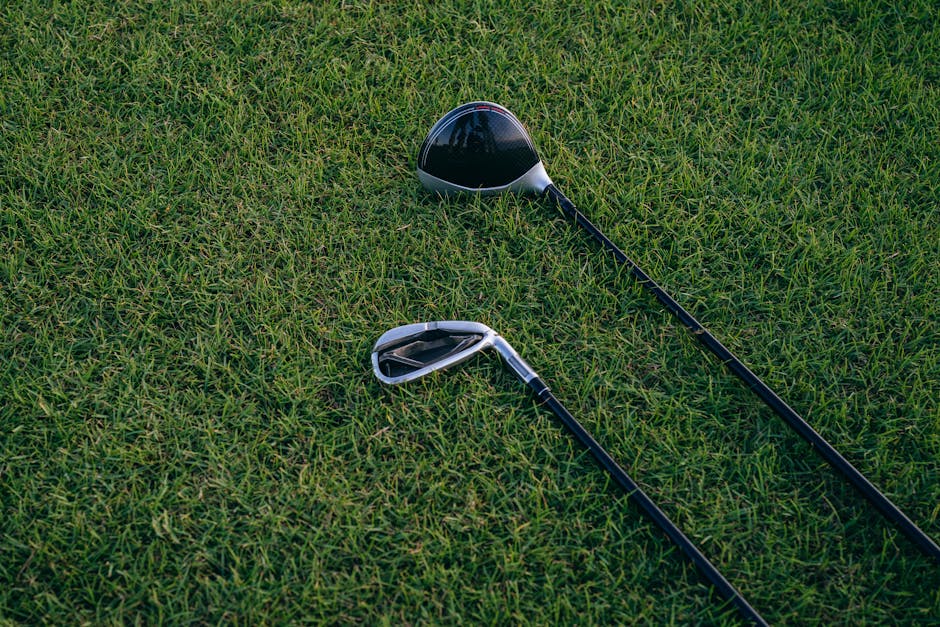Get a Grip: Techniques for Holding a Golf Club Like a Pro
Mastering golf starts with the most fundamental aspect of the game: how you hold the club. A proper grip enhances overall performance, increases swing accuracy, and minimizes the risk of injury. In this comprehensive guide, we’ll delve into professional techniques and tips for gripping a golf club, ensuring you’re ready to elevate your game with every swing.
Understanding the Basics of a Golf Grip
Before you can replicate the grip of professional golfers, you need to understand the anatomy of the grip itself. Generally, your grip is the only connection between you and the golf club, making it the critical determinant of the power and control you exert over your golf shots.
There are three main types of golf grips:
- The Overlapping Grip: Often used by professionals, this grip involves placing the pinkie finger of your trailing hand between the index and middle finger of your leading hand. This grip is favored for its blend of stability and freedom.
- The Interlocking Grip: This grip locks the pinkie finger of your trailing hand with the index finger of the lead hand, offering more control, which is ideal for players with less hand strength or smaller hands.
- The Baseball Grip: With this grip, all fingers stay on the club much like holding a baseball bat. This is particularly useful for beginners and younger players who need a simpler, more straightforward grip.
While these grips vary, the choice depends largely on what feels most natural and effective for your play style and hand size.
Mastering Your Grip Technique
To gain the precision and power seen in professional golfers, follow these detailed steps to mastering your grip:
- Choose the Right Golf Club: Ensure the club fits comfortably. The grip size should match your hand size for optimal control and comfort.
- Hand Placement: For right-handed golfers, place your left hand (lead hand) on the club first. Your hand should be placed in a manner that the top of the club handle sits just below the heel pad, and the handle is held more in the fingers than the palm.
- Securing the Lead Hand: Wrap the fingers of your lead hand around the grip, ensuring that the thumb points down the shaft. The thumb should rest at a slightly right angle to the shaft.
- Positioning the Trailing Hand: Gently place your trailing hand so that it complements the position of the lead hand. The thumb of the lead hand should fit in the lifeline of the trailing hand.
- Adjust and Align: Check your alignment by ensuring that the ‘V’ shapes formed by the thumb and forefinger of both hands point between your chin and right shoulder (for right-handers).
It’s imperative to practice these steps until the grip becomes second nature. Remember, a good grip sets the foundation for a powerful and accurate swing.
Common Mistakes and How to Avoid Them
Many beginner golfers struggle with common grip mistakes, but here are tips to avoid them:
- Too Tight a Grip: A grip that is too tight restricts your swing motion. Aim for a firm yet relaxed grip, as if you’re holding a bird without squishing it.
- Grip Imbalance: Ensure your hands work as a unit. An imbalance can twist the club during the swing, leading to inaccurate shots.
- Incorrect Hand Position: Keep your hands aligned as incorrect placements could alter the face angle of the club at impact, affecting the shot’s direction.
Enhancing Your Grip with Accessories
Modern golf accessories can help refine your grip technique:
- Golf Gloves: Wearing a glove can enhance grip, especially in hot or rainy conditions, by preventing the club from slipping.
- Grip Aides: Various devices can be attached to the club to teach and enforce proper hand placement.
- Tackifying Sprays: These sprays make the club’s handle stickier, offering more grip control during wet conditions.
Incorporating Grip Practice in Your Training Routine
Consistent practice is crucial. Include grip exercises in your routine to develop muscle memory. Utilize practice grips or training clubs at home or the driving range. Over time, the proper grip will feel natural, allowing you to focus more on other aspects of your golf game.
Conclusion
A proper golf grip is essential for improving your game. By understanding different grips, mastering the technique, and regularly practicing, you will possess the foundational skills of a professional golfer. Remember, patience and consistent practice are your allies in becoming proficient in the art of gripping a golf club.
With attention to detail and the right tools and techniques, your grip—and your golf game—will improve significantly, making your golfing experience both enjoyable and successful.
